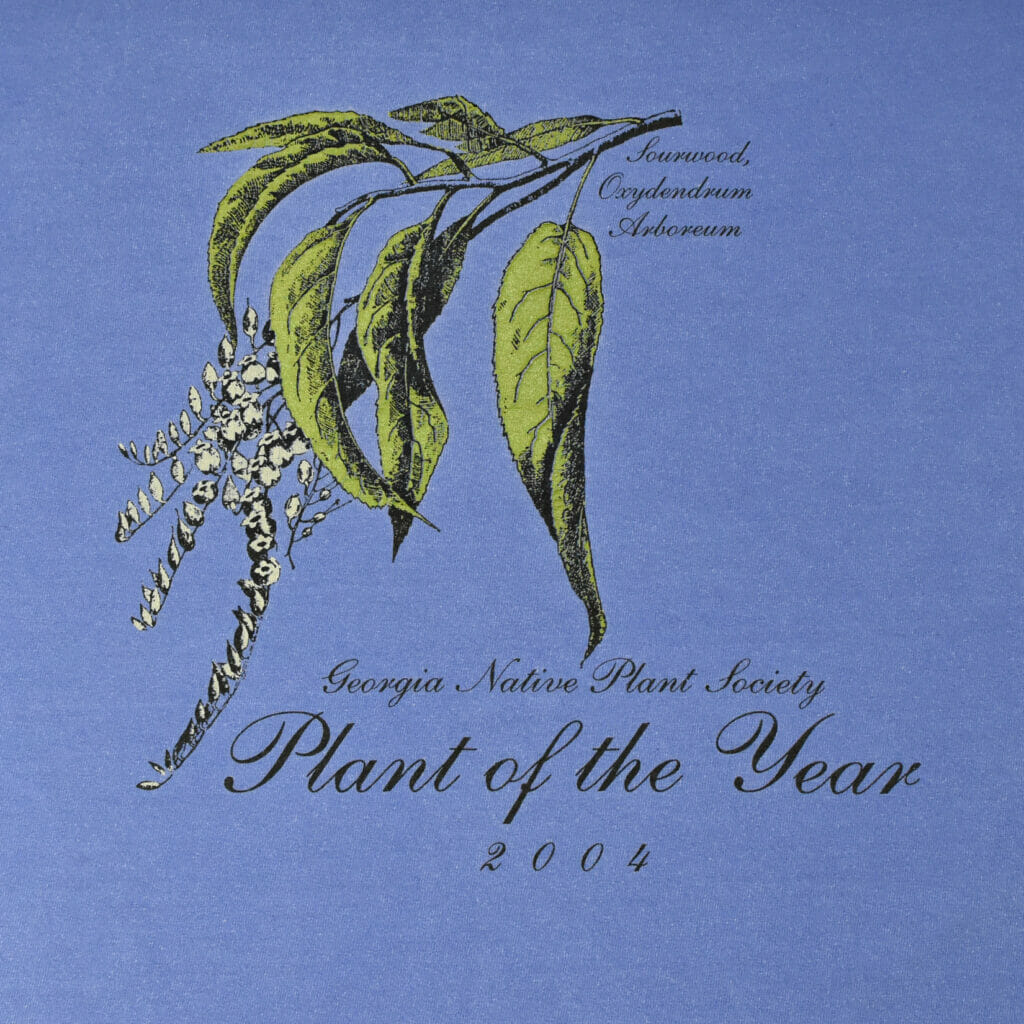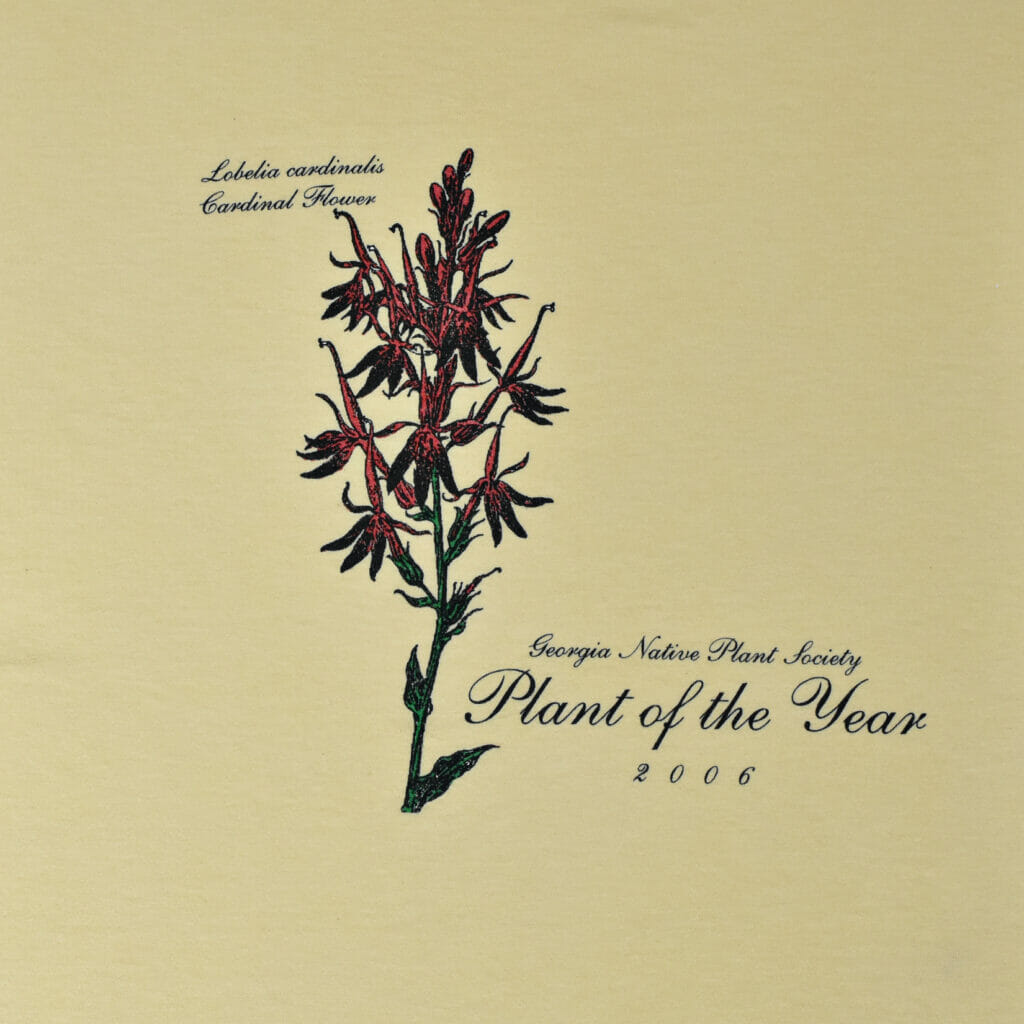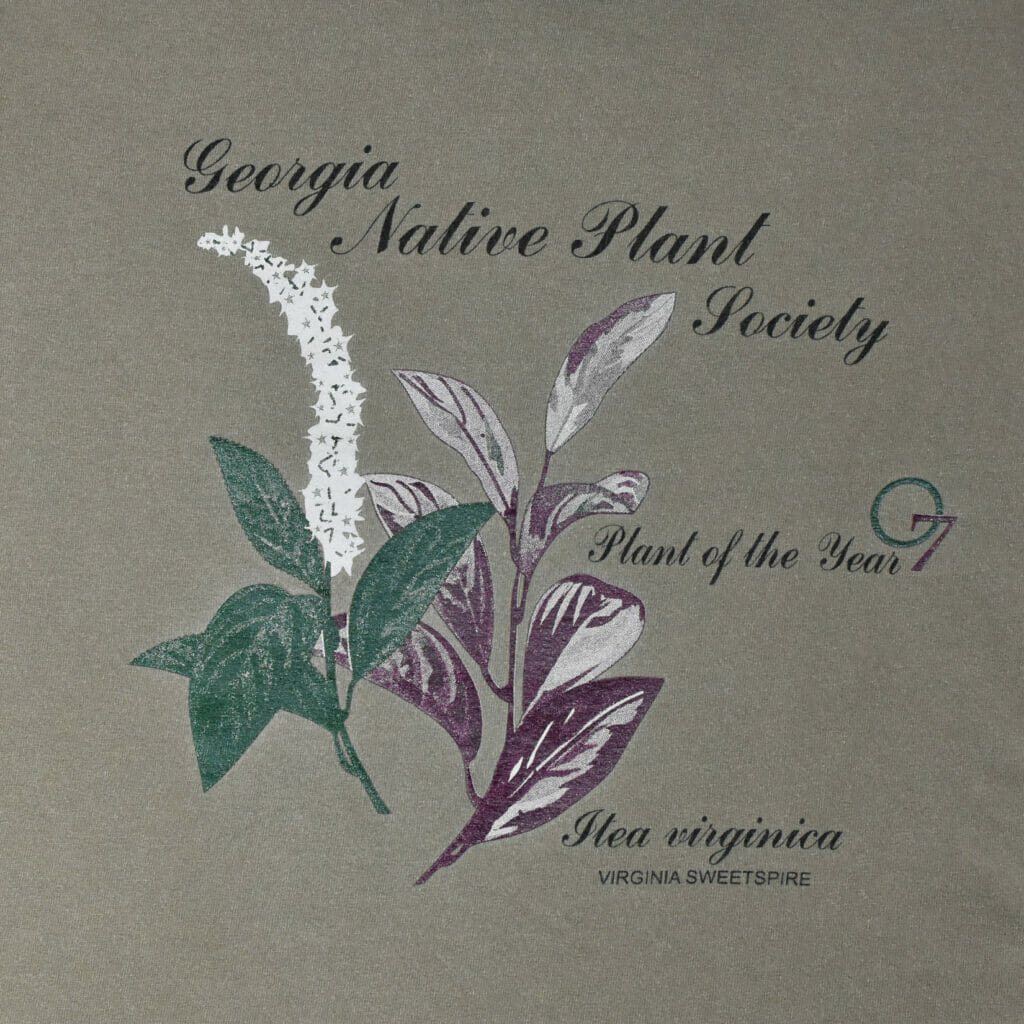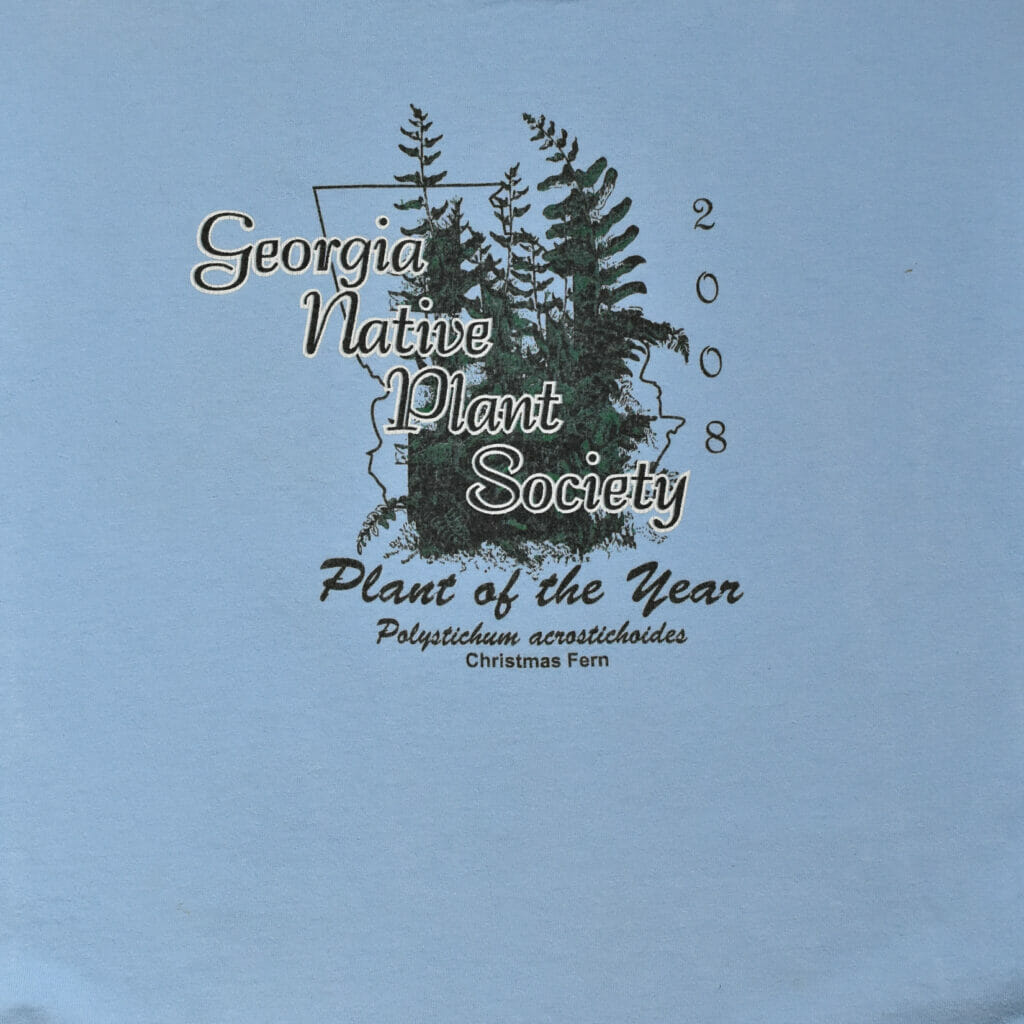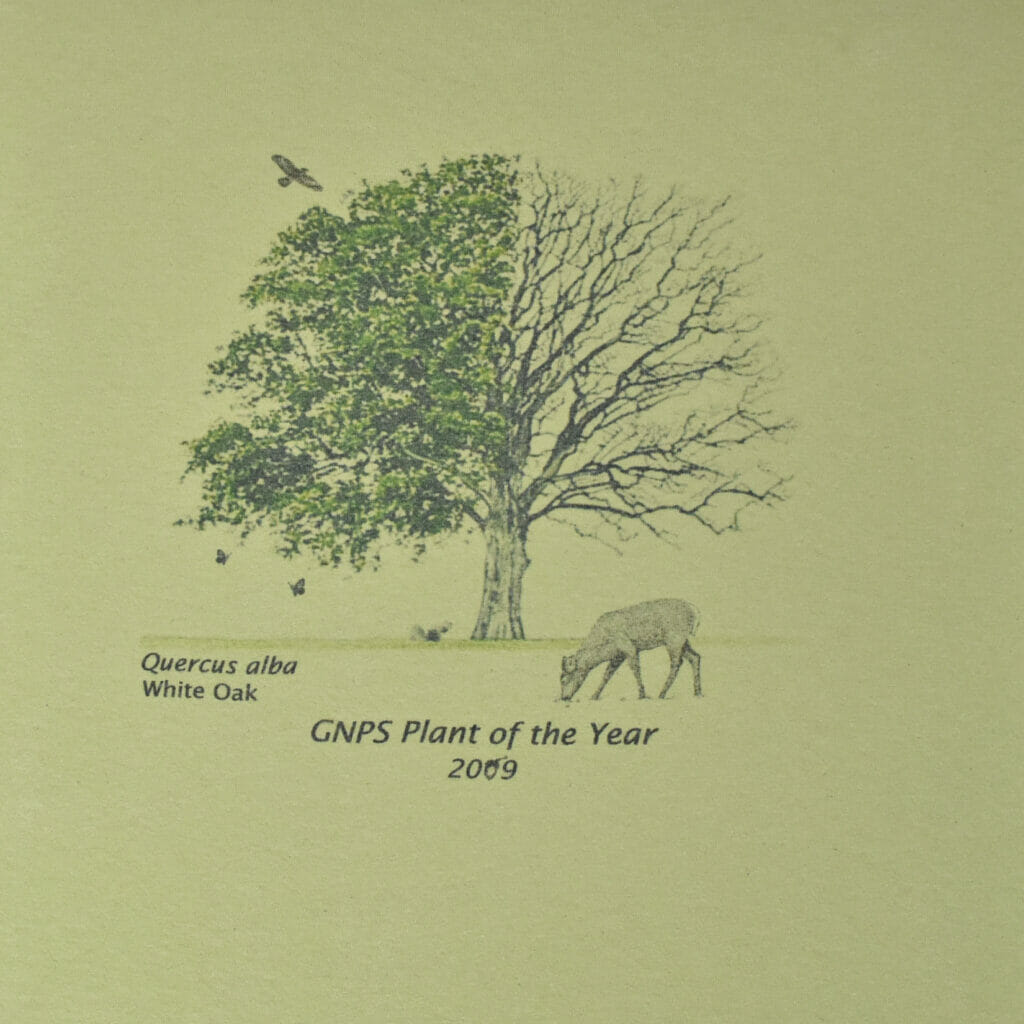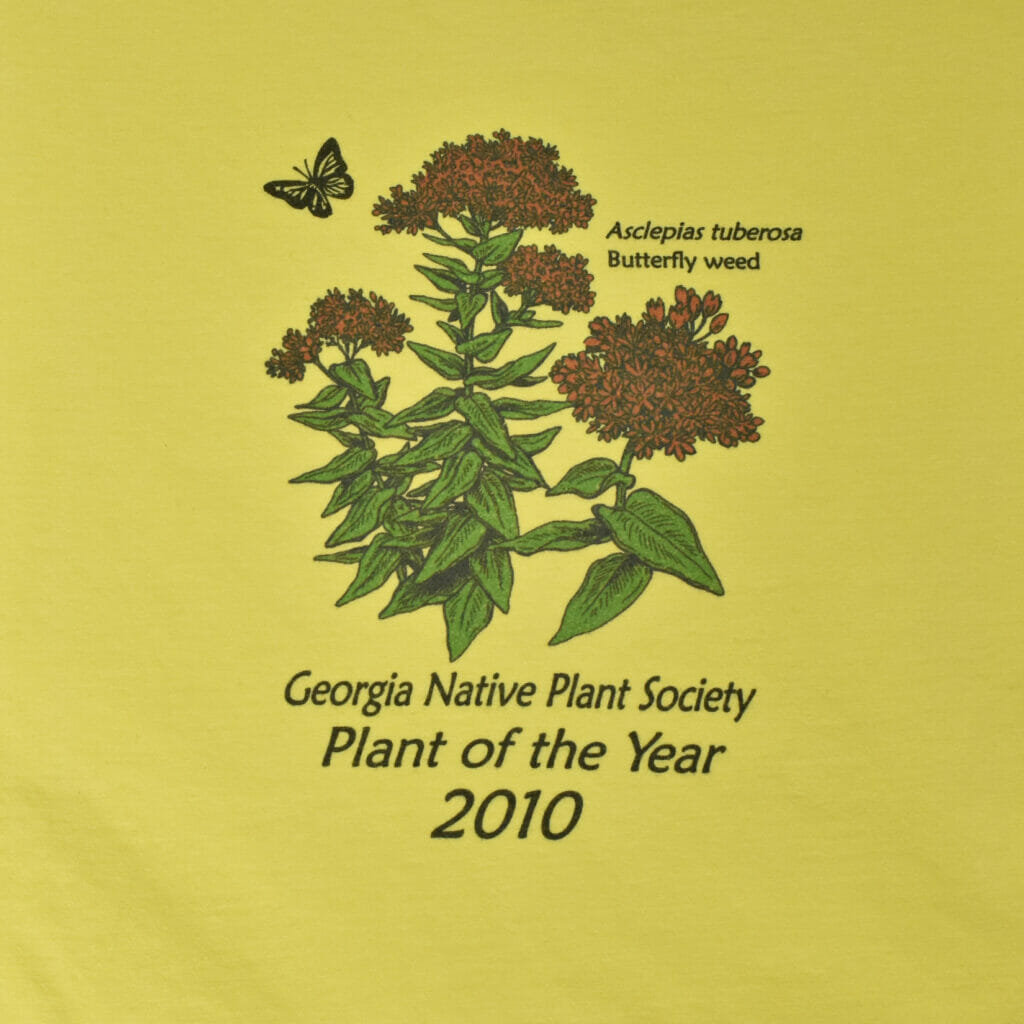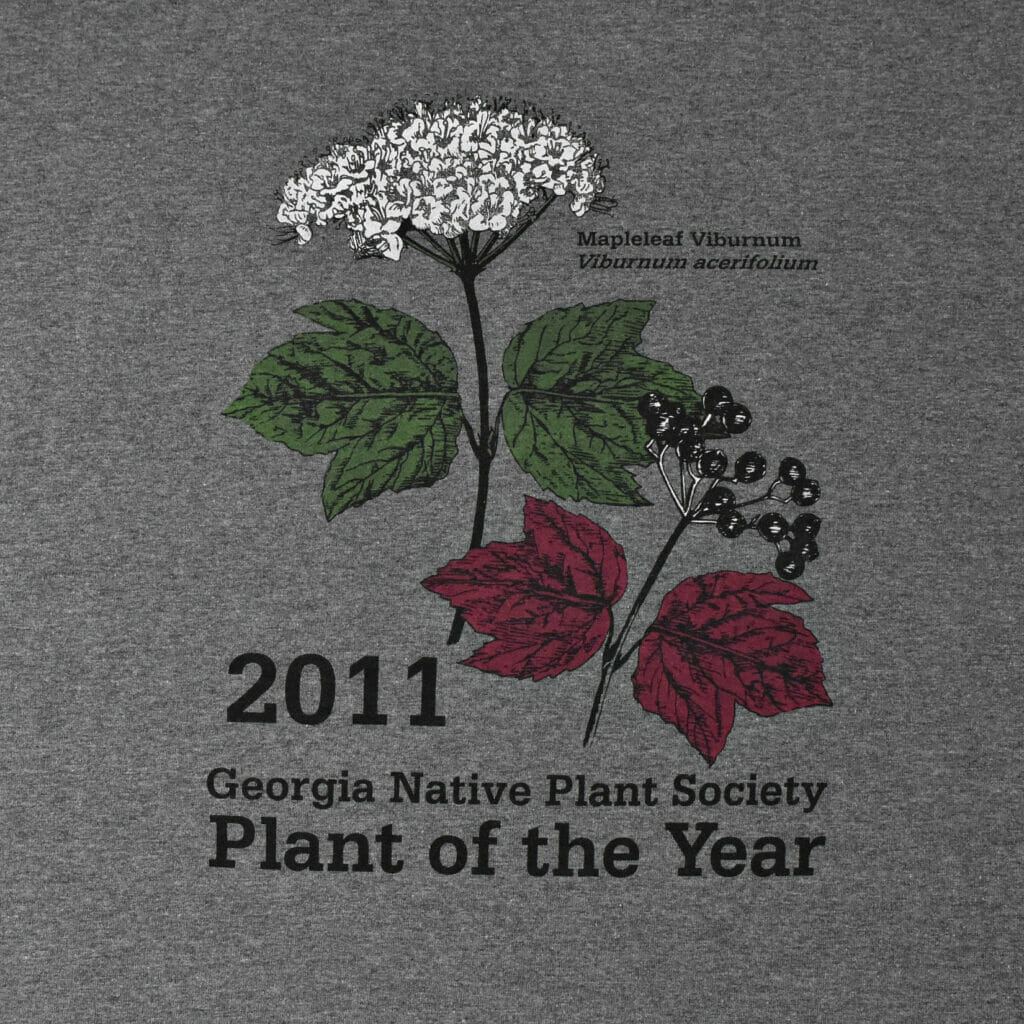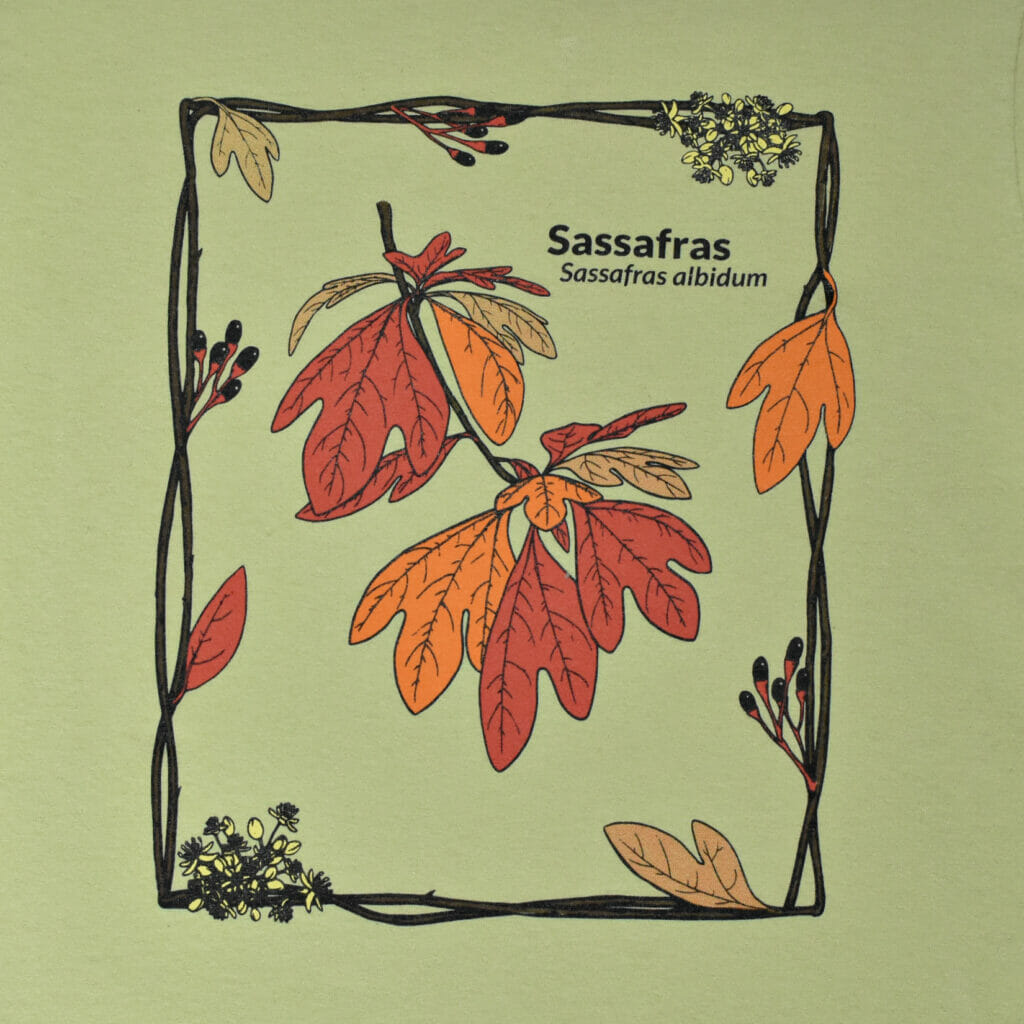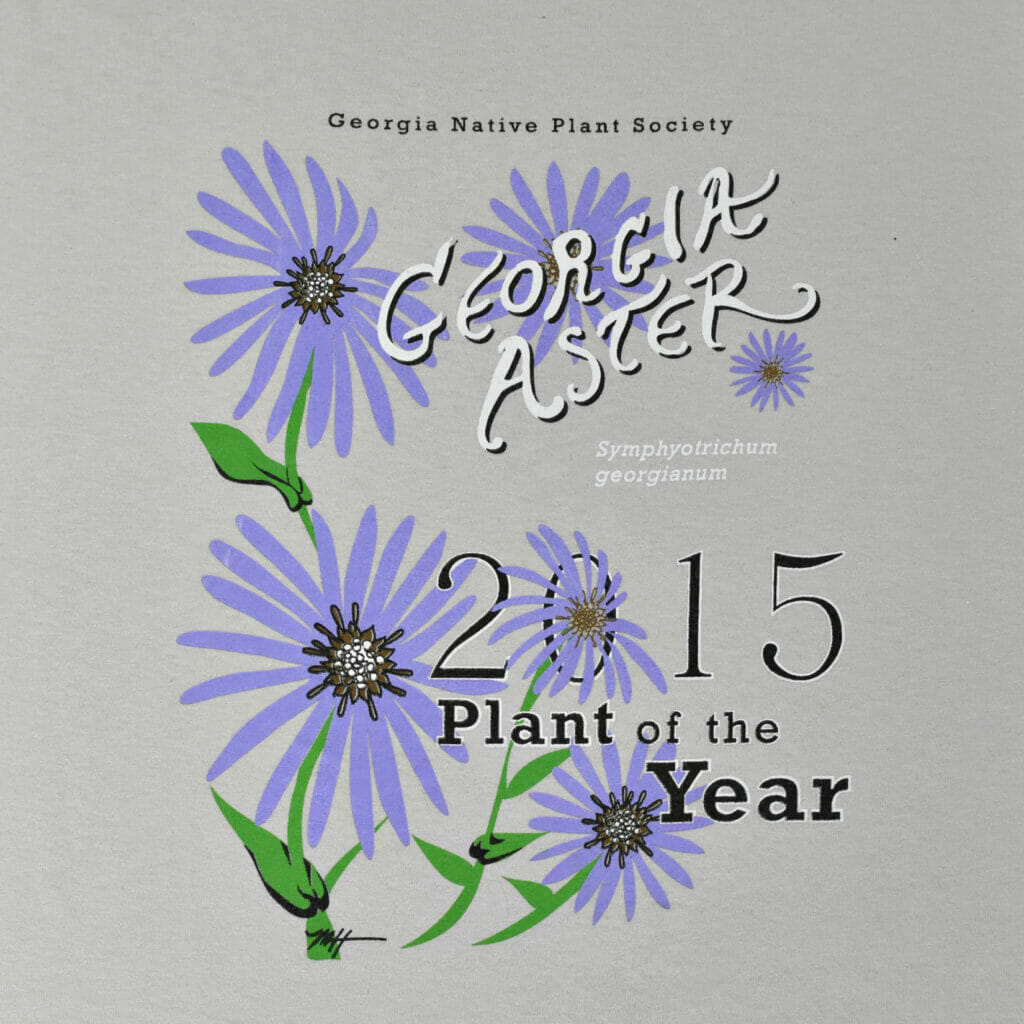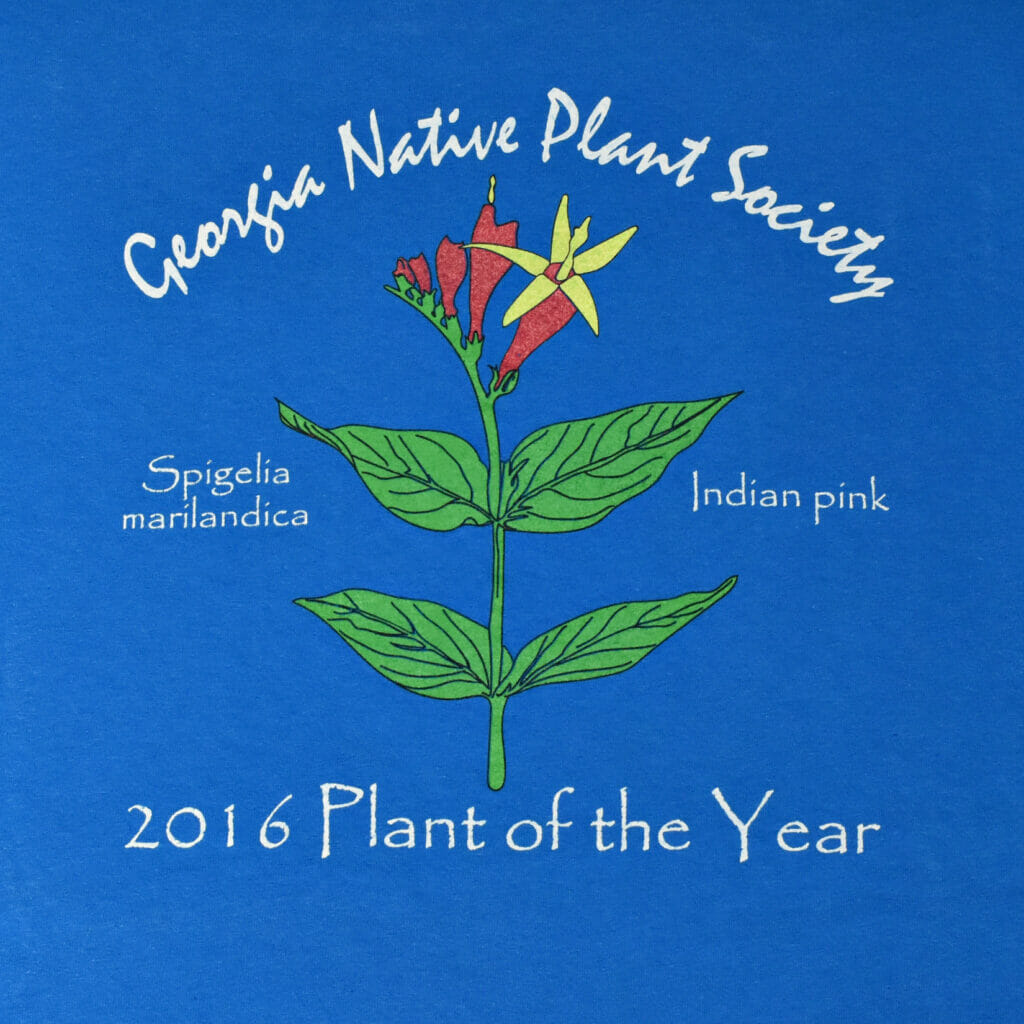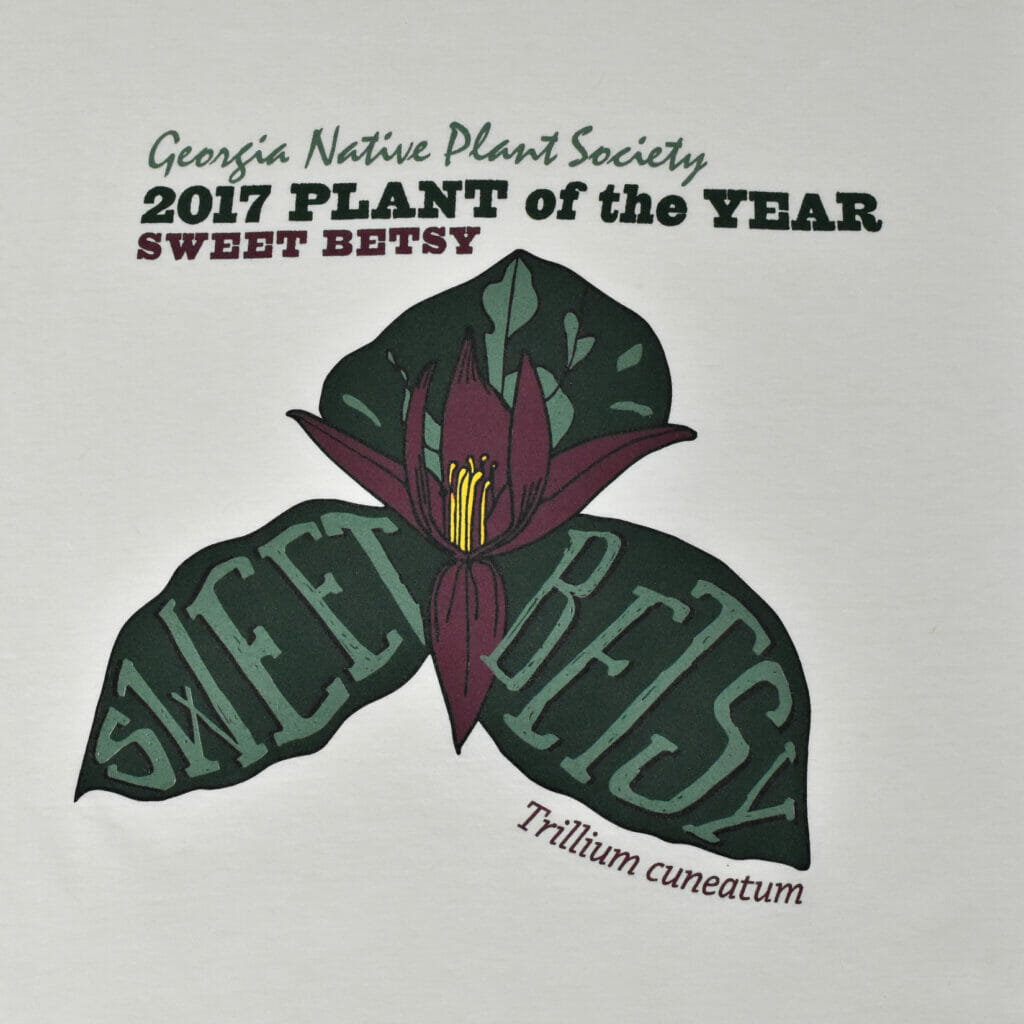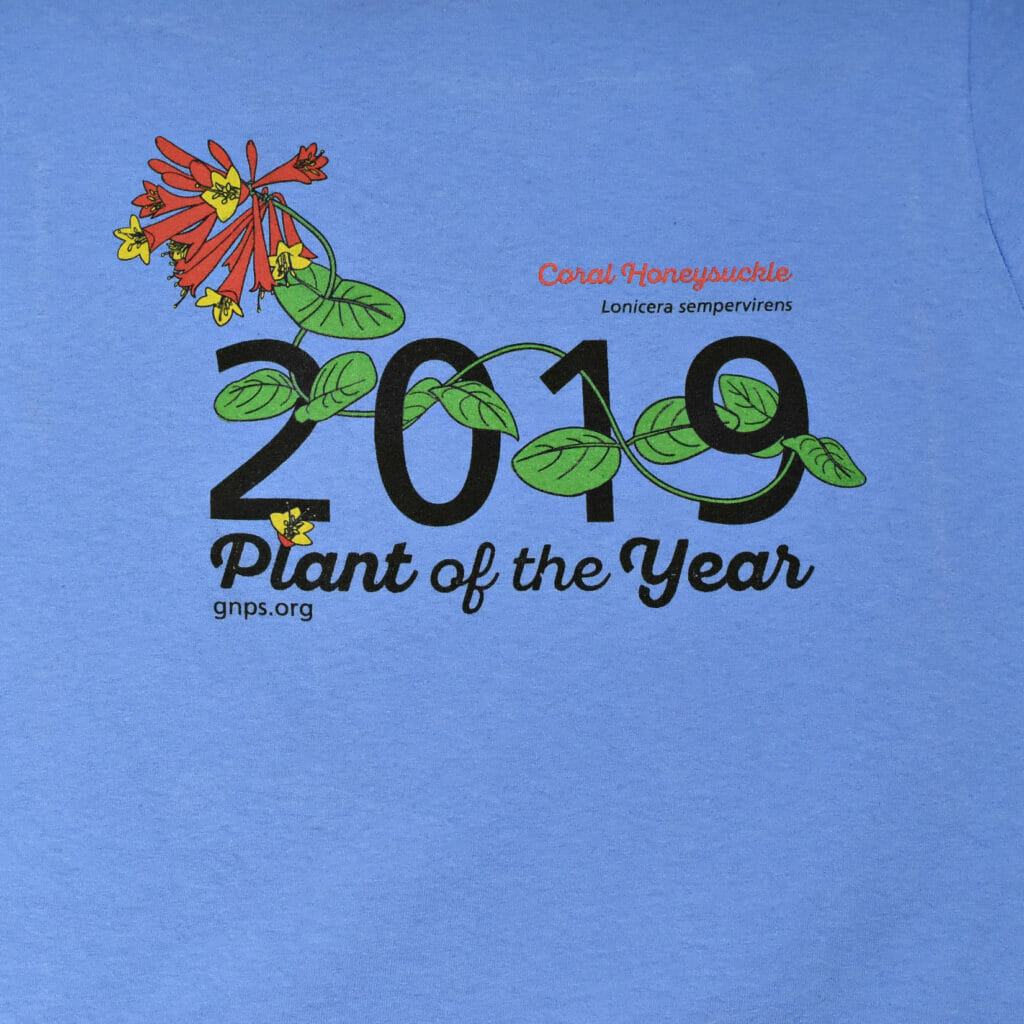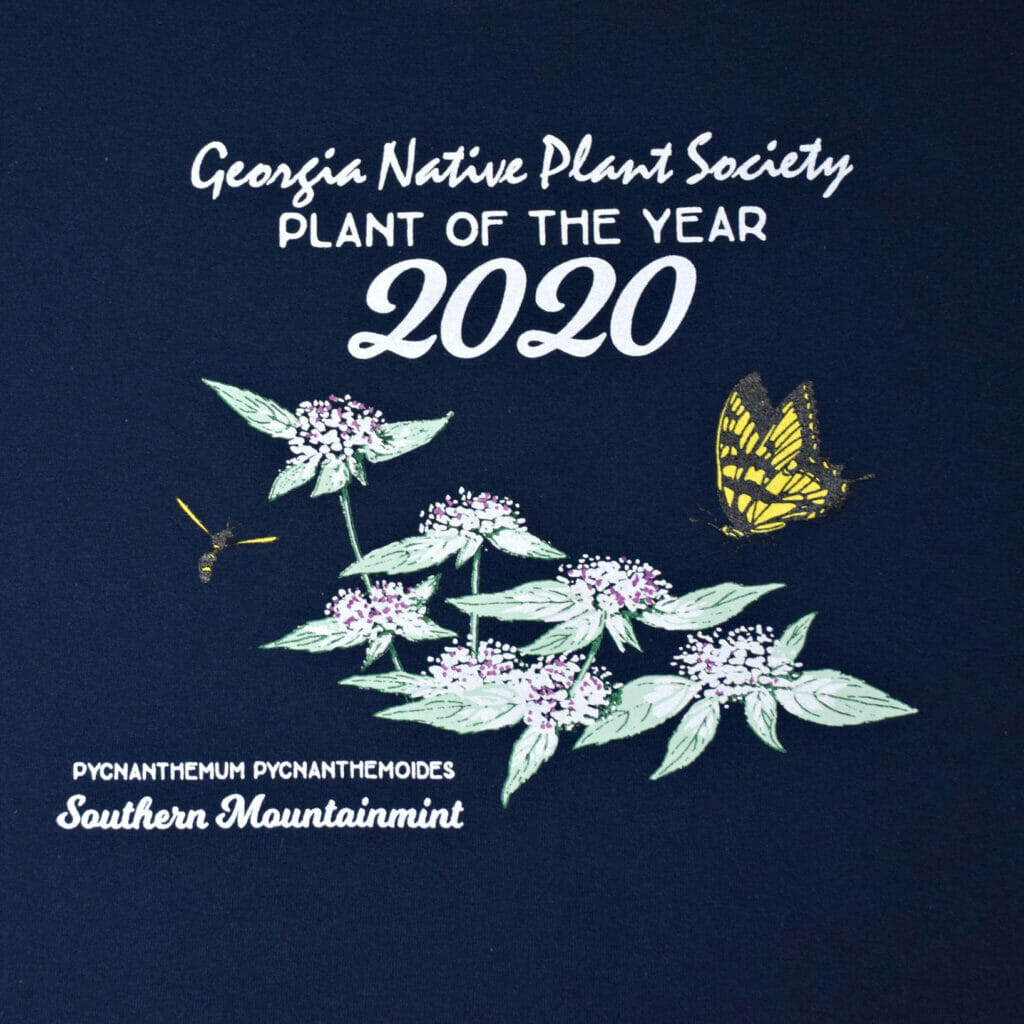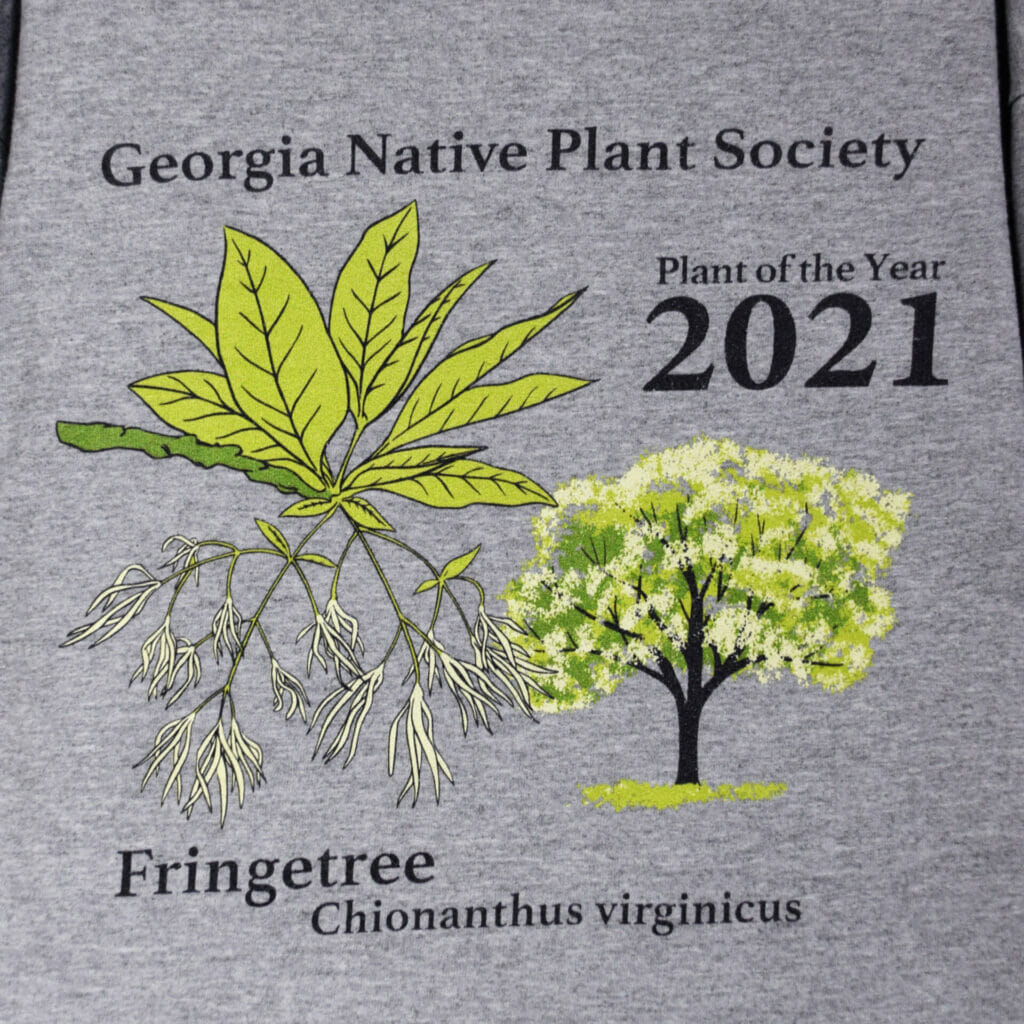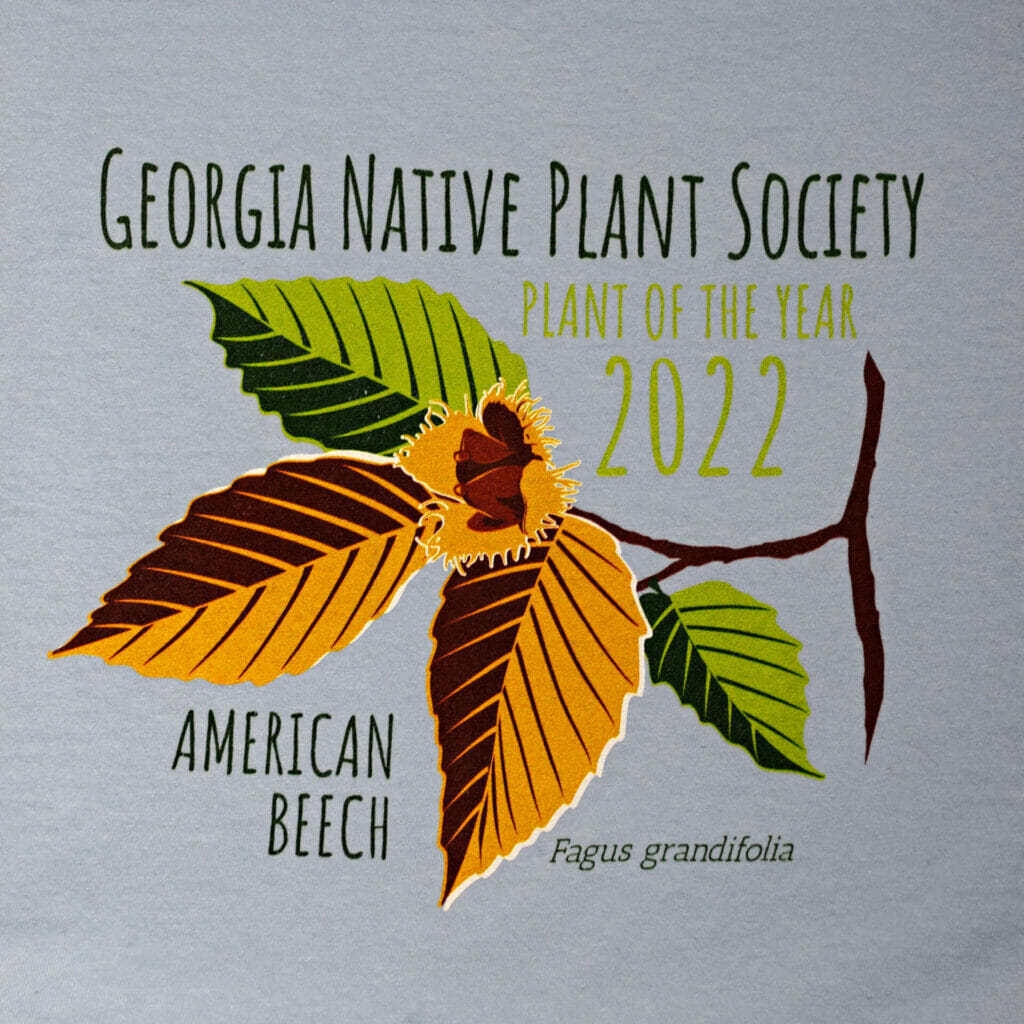Spring 2020 Plant Sale
The Georgia Native Plant Society hosts a Fall and a Spring plant sale each year providing the public and our members an opportunity to purchase plants native to Georgia. General information, including details of past sales is at our archived plant sale page. Our Spring 2020 sale has been cancelled. See updates in the blog posts below.
Plant Sale Updates & News
Year-End Summary 2021
The year 2021 was the second year of our transformation to a state-level board with support of increased local chapters. We started the year with three chapters and finished it with eight, an incredible spurt of growth fueled by passionate local members and the Membership/Chapter Relations committee.
The State Board of Directors met recently for two days in November to develop a three-year strategic plan aimed at increasing education, strengthening our partnerships and our chapters, and creating some advocacy initiatives. We’ll be sharing more details of that in the months to come, including asking some of you to join us in the work.
As the year concludes, we provide a summary of where GNPS is now and some of what we look forward to next year. Our members continue to be our greatest asset; we thank you for your support in 2021 and hope that you will continue to be with us in 2022.
Chapter Status
Chapters are key to our success and to our members’ growth. Chapters will lead local programs like regular meetings, workshops, Habitat Certification, plant rescue, site restoration, local propagation, and activities with local partners such as cities, counties, and like-minded groups.
- Members may currently affiliate with any of the following eight chapters: West Georgia; Coastal Plain; North Metro Atlanta; Intown Atlanta; North Georgia Mountains; Fringed Campion (Macon area); Augusta’s River Region; Athens-East Piedmont. A portion of your membership dues will be distributed to your affiliated chapter each year to support their local programs.
- The Redbud Project (Gainesville) decided to dissolve their chapter association with GNPS. If you are interested in helping us form a chapter in the Lake Lanier area or any new area, please email membership@gnps.org.
Membership
We end the year with 1,466 memberships, a 27% increase over the beginning of 2021. Woo-hoo! Most of our members have chosen a chapter affiliation.
New Items
- We introduced a new online store this year to help members statewide have access to shirts and logo items. We envision this being our method of making the Plant of the Year shirts available going forward. We are happy with the quality of digital printing offered by this vendor, and anyone is able to custom order the style, color, and size of the shirt that they want. You can find the link to the store at the top of our website (look for the mini shopping cart).
- We’ve also recently added more content to our History page on the website. If you’d like to take a trip down memory lane, including the history of the POY shirt, check it out.
- Stone Mountain Propagation Project (SMPP) has shifted focus to growing local ecotypes that are not readily available but deserve wider landscape use, as well as providing more plants for GNPS and other habitat restoration projects. In 2022, SMPP will grow 10,000 pollinator plant plugs for Georgia Audubon in support of a prairie restoration project at Panola Mountain State Park. The Coastal Plain Chapter also is stepping up propagation efforts both to support chapter plant sales and to grow species of concern for the Georgia Department of Natural Resources.
Continuing Programs
- Symposium: The 2021 Symposium was held virtually across two sessions on February 27 and 28 and the attendance was amazing: we were able to reach far more people than we ever have. GNPS partnered with Georgia Audubon for the event. For 2022, we will have the event on February 19 and 20, again in partnership with Georgia Audubon. The program will be titled: Healing our Habitat: At Home and In the Wild; six speakers will present five topics about how we can heal our native habitats in our own landscapes as well as in conservation efforts.
- Newsletters/Website Communications will remain at the state level for 2022, although local chapters may also have newsletters and individual websites.
- The scholarship program, began in 2020 to support the Native Plant Certificate program administered by the State Botanical Garden, awarded two funded annual scholarships in 2021. One was awarded to Piedmont resident Alexandra Kleinberg and one to Coastal Plain resident Kalyn Potts. These two young women, along with last year’s recipient, Julie Pope, have enrolled and are making progress toward their native plant certificates.
Society Financials
As of November 30, 2021, our total income was $43,147, with total expenses of $31,336. In 2021, membership and donations were our primary sources of income. Thank you for your support! Our reserves of just over $200K are safely invested in anticipation of future statewide growth and the support that our chapters may need.
Chapters received over $7,000 in support from dues rebates, funding for start-up costs, and plant sale net proceeds from donated plants.
State Board
The following new board members are joining in 2022: Karan Rawlins and James (Greg) Lewis. We wish to thank departing board member Kevin Burke for his service in 2021.
Thank you for being a member in 2021. We encourage you to get more active in your chapter; the old adage is still true: many hands make light work. In addition, fresh ideas and perspectives are essential to positive change while the experience of longtime members helps our new ones grow. We need you all.
Reach out to the board with any questions or to volunteer: board@gnps.org.
History of the Plant of the Year (POY) T-Shirt
The GNPS plant of the year program started in 2000 but the plant of the year t-shirt program did not begin until 2003 when Foamflower (Tiarella cordifolia) was the first plant to be featured.
Over the years, the designs of the shirts have changed in several ways. Most t-shirts were designed to have the picture on the back of the shirt, but several did have it on the front. The pocket design has been varied over the years, from plain to logo to even using parts of the shirt design to create a unique pocket design. The merchandise chair was usually in charge of implementing the t-shirts: soliciting the design, choosing the colors of the shirt, and whether the shirts would be unisex only or include ladies’ cut and long-sleeve. Silkscreen was used to print the shirts except for 2 years when they were digitally printed (in the hopes of being able to print more quickly but the design was subject to fading). In 2021, because of the wider distribution of members, GNPS stopped printing shirts and went to an on-demand digital print site where people could order their own shirt, choosing from different styles and colors of shirts. (Note: if the photos below this line don’t show, click on the box where the photo should be to get to the gallery.)
For several years, there was a unique shirt color chosen for the plant sale volunteers.
A number of designers have contributed, including GNPS members and friends of members.
2003 – Foamflower, member Shannon Pable, design on back
2004 – Serviceberry, member Shannon Pable, design on back
2005 – Sourwood, member Shannon Pable, design on back
2006 – Cardinal flower, member Shannon Pable, design on front
2007 – Virginia sweetspire, member Shannon Pable, design on front
2008 – Christmas fern, designer unknown, design on front
2009 – White oak, designer unknown, design on back, decorative pocket; digitally printed
2010 – Butterflyweed, member James Honeycutt, design on back, decorative pocket; digitally printed
2011 – Mapleleaf viburnum, member James Honeycutt, design on back
2012 – Bloodroot, Jenn Smith, design on back
2013 – Sassafras, Jenn Smith, design on back
2014 – Red buckeye, member James Honeycutt, design on back
2015 – Georgia aster, Megan Hamilton, design on back, decorative pocket
2016 – Indian pink, Paige Castle, design on back
2017 – Sweet Betsy trillium, Megan Kibby, design on back, decorative pocket
2018 – Beautyberry, Jenn Smith, design on back, decorative pocket
2019 – Coral honeysuckle, Jenn Smith, design on back, decorative pocket
2020 – Mountain mint, member Linda Fraser, design on front
2021 – Fringetree, Jenn Smith, design on front; digitally printed via direct order
2022 – American beech, Brian Weber, design on front; digitally printed via direct order
Prior to the POY shirts, GNPS t-shirts had the logo on the front and were printed in unisex short and long-sleeve in a variety of shirt colors (light color shirts had dark ink while dark shirts had light ink). The logo shirt was reprinted in 2019 with the extra text “Celebrating 25 years: 1994-2019”.
Four New Chapters Granted Provisional Status
As of October 12, 2021, four of our forming chapters have been granted Provisional Status while they await IRS approval of their 1023-EZ form. The GNPS Board of Directors is proud to welcome these four chapters: North Metro Atlanta, Intown Atlanta, Fringed Campion, and North Georgia Mountains. They join our two existing chapters, West Georgia and Coastal Plain.
Provisional chapters will have most of the rights and privileges of an official chapter, some of which are summarized below.
- Chapter Elections – chapters may hold chapter board elections.
- Chapter Bylaws Vote – chapters may have their members vote to accept the chapter’s bylaws that GNPS has approved.
- Directors and Officers Insurance – the elected chapter board will be covered by directors and officers insurance provided by GNPS.
- General Liability Insurance – the chapter and its members will be covered by general liability insurance provided by GNPS.
- Annual Chapter Rebates – the chapter will be entitled to the yearly chapter rebate.
Learn more about our chapters, including others that are still forming, on our Chapters page. Information about forming a new chapter is also on that page.
Year-End Summary 2020
After adopting new bylaws in November 2019 to restructure GNPS into a more effective organization (summary of changes here), we were excited to embark on a statewide expansion of chapters under guidance and policy set by the new state-level board of directors and committees. However, we were not immune to the challenges that 2020 brought to the world. Shortly after our February 29th Symposium, it became clear that our robust plans for new chapters would have to wait until it was safe to resume in-person gatherings.
Luckily, much of our formative state-level policy work, an important part of the change, was able to continue through remote meetings of the committees — Conservation, Education, Finance, Audit, Governance, and Member/Chapter Support. All committees made good progress in creating policies and procedures to guide the organization at the state level. Committees also are reviewing and revising existing programs GNPS programs such as Habitat Certification, Plant Rescue, and Site Restoration so that new chapters can quickly and effectively implement these programs at their local level.
In 2021, the state board of directors will continue to formulate strategic initiatives across the state. Committees will continue to translate that strategic plan into educational tools and activities to help chapters engage members. Chapters will continue to work in their local communities carrying out the mission to teach more Georgians that using native plants and safeguarding existing native plant habitat through our conservation policies are important efforts.
As the year concludes, here we provide a summary of where GNPS is now and some of what we look forward to next year.
Chapter Status
- Chapters will lead local programs like regular meetings, workshops, Habitat Certification, plant rescue, site restoration, local propagation, and working with local partners such as cities, counties, and like-minded groups.
- Members may currently affiliate with any of 3 existing chapters: West Georgia, Coastal Plain, or Redbud Project (Gainesville area).
- Areas where chapters were beginning to form and which we hope will move forward in 2021: Atlanta, North Metro Atlanta, Macon, Augusta, Athens. Email us at chapters@gnps.orgto get more involved in forming chapters.
Membership
We end the year with 1,150 memberships, a 13% increase over the beginning of 2020. Each of our 3 chapters has approximately 100 memberships, so the bulk of our members (695) are in areas where those new chapters need to form so they can have access to local programs and volunteer opportunities.
New Items
- New scholarships were funded to support the Native Plant Certificate program administered by the State Botanical Garden. Two annual scholarships will be funded: one for a Piedmont resident, one for a Coastal Plain resident.
- Stone Mountain Propagation Project will shift away from growing plants solely for Atlanta area plant sales and focus on growing local ecotypes that are not readily available but deserve wider landscape use. SMPP also will support chapter propagation efforts and cultivate a broader educational partnership with Stone Mountain Park.
Continuing Programs
- Symposium: The 2021 Symposium will be held virtually across two sessions on February 27 and 28 (2 hours each day). GNPS will partner with Georgia Audubon to execute this program entitled Georgia’s Wildlife from the Ground Up: Why Native Plants & Places Are Essential
- Newsletters/Website Communications will remain at the state level for 2021, although local chapters may also have newsletters and individual websites.
Society Financials
As of November 30, 2020, our total income was $39,534 with total expenses of $36,282. In 2020, membership and program income were our primary sources of income while our February 2020 Symposium and administrative expenses were our largest costs. Our reserves of just over $200K are safely invested in anticipation of future statewide growth and the support that our chapters may need.
Our Treasurer, the Finance Committee, and the State Board made several key decisions in 2020 that resulted in 1) savings on insurance while also improving our coverage; 2) improved investment income; 3) savings on our storage unit (moved to a cheaper location); and 4) savings on website services.
State Board
The following new board members are joining in 2021: Mary Lillian Walker, Kevin Burke, and Carling Kirk. We wish to thank our departing members: Leslie Edwards, Marc LaFountain, and Henning von Schmeling.
Thank you for sticking with us through this challenging year of 2020. We hope you will renew your membership in 2021 and continue your support of our mission and the growth of GNPS. For those of you with an expiring membership, you should have already received an email reminder; we encourage you to renew. Reach out to the board with any questions or to volunteer: board@gnps.org.
GNPS Statement on Cultivars of Native Plants
The GNPS Board of Directors has created the following statement on using cultivars of native plants. It includes some background information to set the context for it. Following the statement are some resource links to provide some of the research regarding cultivars.
What is a cultivar?
A cultivar (short for cultivated variety) is a selection of a plant that has been patented and propagated through cultivation, most often through cuttings, division, or tissue culture and sometimes selected seeds usually through controlled pollination of the parent plant. In order to preserve the traits for which they were selected, most cultivars are clones of the original plant. For native plants, some people refer to these as ‘nativars’ but they are the same concept as the broader term ‘cultivar.’ Cultivars can be hybrids or they can be selections of the species found in a population of plants. For comparison, the term ‘straight species’ refers to the plant as originally found in the wild.
Why are they created?
Nurseries and breeders select plants for cultivars because of a desirable trait such as: a more compact size; a particular flower color; more blooms per plant; double blooms; larger blooms; disease resistance; unusual leaf color; larger fruit; etc. The selected plant might have been deliberately bred in a nursery or selected from a wild population.
How do you recognize that a plant is a cultivar?
Proper labeling on the plant helps you recognize a cultivar. Straight species plants have the scientific name such as Phlox paniculata while cultivars have a name in single quotes that follow: Phlox paniculata ‘David’; a hybrid cultivar should include an ‘x’ in the name to denote that two species were crossed: Phlox x ‘Wanda.’ Once you identify that a plant is a cultivar, search engines (such as Google and Bing) can help you research the plant to understand why it was selected and/or the species used to create it (if it is a hybrid). Further use of the word ‘cultivar’ here applies equally to hybrid and non-hybrid cultivars of native plants.
Are they appropriate for use?
Cultivars can have a place in designed landscapes/gardens when selected carefully and used in conjunction with straight species plants. For example, cultivars selected for compact form allow smaller gardens to use plants that might have been too large for the space. When choosing to use a cultivar, it is important to understand the traits of the plant and how those match the goal of the garden. For example, plants bred for double blooms are less productive for pollinators and would not be a good choice for a pollinator garden.
Cultivars should not be used in Georgia restoration projects/areas. Straight species, preferably sourced from regional Georgia populations, should be used.
What are some of the concerns with using them?
The concerns are two-fold: loss of genetic diversity and reduced ecosystem services that plants normally provide. Since cultivars are clones, using them exclusively reduces the genetic diversity of the species, diminishing the biological heritage of the species and opening the potential for biological decline of it.
To fully appreciate how a cultivar can reduce a plant’s benefit to the ecosystem requires a bit of research about the cultivar. Scientific research by Doug Tallamy and Annie White have helped us understand two areas of alteration that affect a plant’s ability to provide ecosystem services to native insects: 1) forms that alter the leaf color (particularly dark colors are less attractive to insect herbivores like caterpillars); and 2) forms with double blooms provide less nectar and pollen to pollinators while the research on flower color form continues.
We recognize that while we have better information than before on how insects interact with native cultivars, the research on them will continue and will likely improve our understanding even further in the future.
Our statement about using them:
The Georgia Native Plant Society recognizes that balanced use of some native cultivars in designed landscapes can provide specific functionality (e.g., compact size) and landscape beauty to showcase native plants and still support wildlife. We do not recommend that cultivars be used in Georgia restoration projects. Restoration projects should only use straight species plants that are as locally sourced as possible, preferably from seeds or plants in the same ecoregion.
When used in designed landscapes, cultivars require some additional considerations. We recommend that straight species of plants also be included in designs when cultivars are used. For example, when using butterfly milkweed Asclepias tuberosa ‘Hello Yellow,’ one should also include the straight species Asclepias tuberosa. If observation in the garden later finds that insects are less attracted to the cultivar, consider removing it in the future and replacing it with straight species. We recommend a healthy balance of straight species and cultivars when cultivars are chosen in the design.
We encourage people to ask for straight species plants in nurseries to encourage more nurseries to grow or stock more genetically diverse plants. When you purchase these plants from nurseries, particularly small nurseries that grow plants from local seed, you encourage the propagation of them and the preservation of biodiversity.
Resources:
Baisden, Emily C., Tally, Douglas W., Narango, Desiree L., Boyle, Eileen. 2018. “Do Cultivars of Native Plants Support Insect Herbivores?” American Society for Horticultural Science
Marinelli, Janet. 2016. “Native, or Not So Much”, National Wildlife Federation
Rodomsky-Bish, Becca. 2018. “Nativars (Native Cultivars): What We Know & Recommend”, Habitat Network/ The Nature Conservancy/The Cornell Lab
White, Annie. 2016. “Nursery to Nature: Evaluating Native Herbaceous Flowering Plants Versus Native Cultivars for Pollinator Habitat Restoration” University of Vermont
White, Annie, 2020. ”How Native Plant Cultivars Affect Pollinators”, Metro Hort Group
*****
This statement can be found on the GNPS Education menu, under the GNPS Policy tab. Please use the link to that statement when referencing it. Direct link: https://gnps.org/education/gnps-statement-on-cultivars-of-native-plants/




